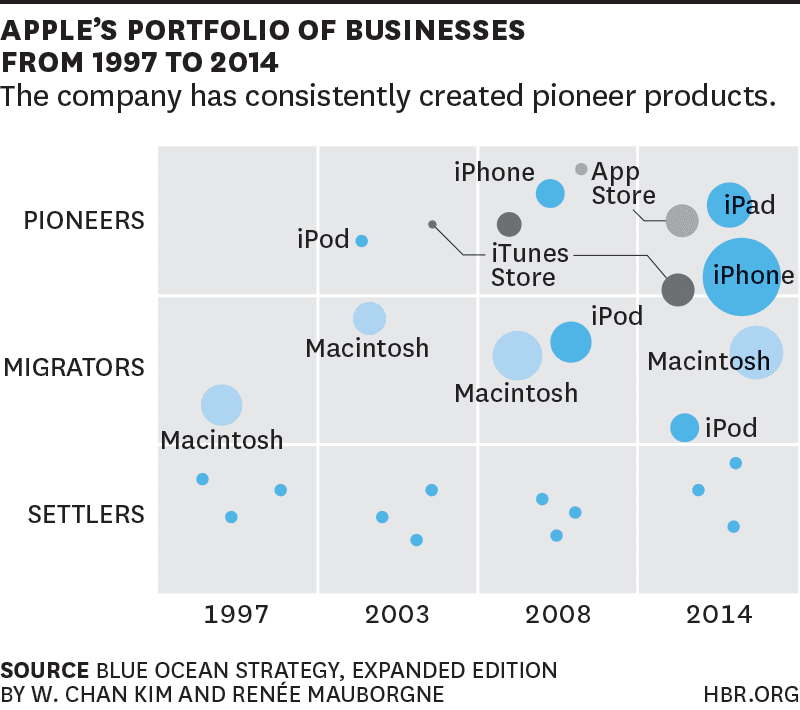Identify Blue Oceans by Mapping Your Product Portfolio – HBR
Un portfolio equilibrado de productos…
Companies with a diverse portfolio of businesses, such as Apple, General Electric, Johnson & Johnson, or Procter & Gamble, will always need to swim in both red and blue oceans and succeed in both oceans at the corporate level. Once Apple’s iPod began to be imitated, for example, to counter competition it rapidly launched a range of iPod variants at various price points with the iPod mini, shuffle, nano, touch, and so on. This not only served to keep encroaching competitors at arm’s length, but also expanded the size of the ocean it created, allowing Apple, not imitators, to capture the lion’s share of the profit and growth of this new market space.The challenge for Apple in going forward is to continue to renew its portfolio, as current pioneers eventually become migrators and settlers, so that it can maintain a healthy balance between the profit of today and the growth of tomorrow.This is the precise challenge Microsoft has been facing for nearly a decade. Despite relatively strong profit, Microsoft has failed to maintain a healthy balance across pioneers, migrators, and settlers. For Microsoft to get out of its slump, it needs to work toward creating a better balanced portfolio across businesses that not only compete in red oceans but also create blue oceans, which renew, expand, and build its leading-edge brand value. …Is your portfolio settler-heavy—as is the case with a majority of declining companies? Has a business that was in the past a pioneer, generating huge profit and growth, become a settler, suggesting that the company’s growth is likely to be slow without the introduction of a new pioneer? Or is your portfolio well–balanced, ensuring current cash flow and strong upside profitable growth potential?

